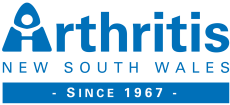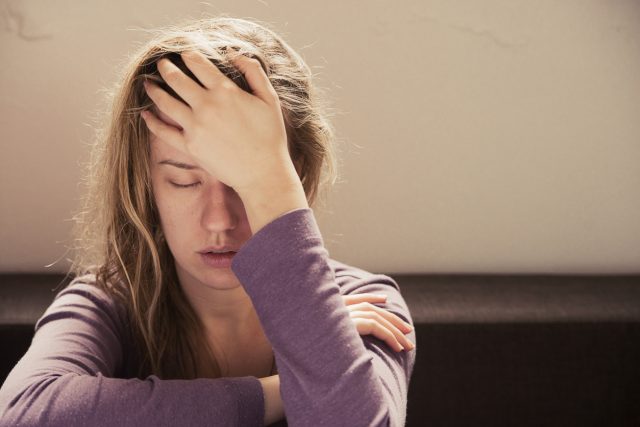What is fatigue?
Fatigue is a feeling of both physical and mental tiredness. It is often described as exhaustion or a lack of energy, and can make everyday tasks seem impossible. Many people with arthritis experience fatigue, no matter what they have been doing or how much sleep they get. There are many possible causes of fatigue, including the disease activity, pain (which can also affect sleep), certain medicines, muscle weakness and wasting, anaemia (low red blood cell count), or depression, as follows.
Contributing factors of fatigue with arthritis
Active disease – Inflammation in the joints and other tissues can cause fatigue in people with inflammatory arthritis and autoimmune diseases. Chemicals called cytokines found in inflamed tissues can cause extreme fatigue. Anaemia sometimes occurs with inflammation, and can also cause fatigue.
Drug treatment – Some drugs used to treat arthritis-related pain may cause drowsiness, loss of concentration and light-headedness.
Pain – Pain is a major symptom of most types of arthritis and it can wear you down, especially if it’s constant. See our BLOG article below, Tips to manage chronic pain.
Muscle weakness – Inactivity due to pain or joint problems can cause muscles to become weak, which may contribute to fatigue because more effort will be needed to make the joints work.
When people are less physically active they become unfit, and this can also cause fatigue.
Overdoing it – Pain and difficulties with joints and muscles can make it more difficult for people with arthritis to do tasks they would previously have found easy. Often people will keep going even after they know they should stop (for example when doing a physically challenging activity such as gardening), which can cause exhaustion for hours or days afterwards.
Stress or anxiety – Your body’s natural reaction to deal with stress is to release a hormone called adrenaline, which prepares the body to deal with a crisis (the muscles, heart and lungs work harder
and the mind becomes very alert). This adrenaline release usually only lasts until the crisis passes, but if the stress continues (for example because of constant pain or anxiety about the future) and your body carries on releasing adrenaline, it can cause physical and mental exhaustion.
Tips to manage fatigue
The good news is that there are ways you can deal with fatigue that may help you.
Talk to your doctor Make sure you let your doctor know if your fatigue does not improve, or is made worse by your arthritis medicines. Sometimes small changes in treatment can make major differences in how you feel.
Exercise Exercise is one of the best things you can do to combat fatigue. Exercise can help strengthen muscles and increase your fitness. Within a few months, you should feel an increase in strength and energy and be able to do more without getting as tired. The key to a successful exercise program is to begin gradually, listen to your body and build slowly. See links below for our exercise resources.
Learn ways to get a good night’s sleep If pain is interfering with your sleep, talk to your doctor or see the Dealing with pain information sheet to learn ways to manage pain. – Limit your caffeine intake to less than 400mg/day. Avoid tea, coffee, soft drinks and energy drinks after dinner. – Try different relaxation techniques until you find one that works for you. For example, you could visualise a restful scene or focus on your breathing. – If you snore when you sleep and, more importantly, if your partner notices you stop breathing at times during your sleep, you may have a condition called Obstructive Sleep Apnoea. You may feel unrefreshed when you wake and very tired throughout the day but it can also seriously impact your health. You should discuss this with your doctor and they may consider referring you for a sleep study and review by a specialist. See link below for our BLOG article, Tips on getting a better night’s sleep.
Acknowledge your feelings and seek support
It is natural to feel scared, frustrated, sad and angry at times. During these times your most important allies can be your friends and family members. Enlist their help and understanding. Educate those close to you about fatigue being a part of your arthritis, and explain to them the ‘ups’ and ‘downs’ you experience. See link below to our Arthritis & Emotions Infosheet.
Conserve your energy and protect your joints
You can also learn ways to save your energy and protect your joints during daily tasks. These tips may also help you cope with fatigue, or reduce its impact on your life:
Pace yourself. Carefully plan and organise your activities so you make the most of your energy. Here are some simple tips to help you pace your activities: – Try to plan your day so that you can alternate periods of activity with periods of rest. – When you know you have a large task to do, such as preparing a meal or cleaning a room, plan ahead and break the job into smaller tasks. Then work on completing the tasks one at a time, and follow each with a rest break. – Try to prioritise jobs. Do the hardest jobs when you are feeling your best. – Take advantage of ‘good days’ to do the things you may have been putting off. Remember not to overdo it on these days as it could result in pain and fatigue the following days. – Simplify tasks. For example, buy pre-cut vegetables and meat to make cooking simpler. Find out about equipment that can make tasks easier (see below). – If you are having a bad day, be ready to change your plans and not force yourself to work through pain. – Ask for help when you need it.
Learn about equipment that can make daily tasks easier. There are many gadgets and aids that can make your daily activities simpler and less tiring. These aim to protect your joints by reducing the effort you have to put in. Examples include: – ergonomic knives to make cutting and slicing easier – adapted cutlery and cooking utensils to allow easy gripping – equipment to help with opening jars or bottles, and turning on taps – equipment to make dressing and showering easier (such as long-handled sponges and shoe horns for reaching your feet) – trolleys (rather than carrying shopping bags in your hands). See the At home with arthritis – Simple steps for managing in the home booklet for more information (see below). You can find more information about these types of equipment at an Independent Living Centre. These centres have a wide range of tools and equipment on display. You can get advice, including where to purchase equipment, in person or over the phone. Occupational therapists are also available at the centres to provide advice about equipment. Although you can drop in at any time, it is preferred that you call the telephone enquiry service beforehand.
See an occupational therapist. An occupational therapist (OT) can show you ways to simplify tasks and advise you on suitable aids and equipment. You will need a referral from your doctor to see an OT in the public system (such as at a community health centre). These services are usually free or low cost. You can consult a private OT at any time without a referral from your doctor. Find an OT by contacting Occupational Therapy Australia on 1300 682 878 or use the ‘find an OT’ feature here.
Resources
ANSW Infosheet – Fatigue & Arthritis (printable)
ANSW Infosheet – Arthritis & Emotions (printable)
ANSW Booklet – At home with arthritis – Simple steps for managing in the home
Other Related BLOG Articles
Tips for a better nights sleep
Exercise
ANSW Infosheet – Physical Activity (printable)
Get Moving! Exercise Series – 4 levels, videos & Info Booklets
The Joint Movement – free online strength training
Arthritis NSW – we’re here to help
We’re here to help whenever you need us. We have a variety of options available for support and information.
- Register for our free webinars here
- For more BLOG articles about managing your arthritis, please visit our News page here.
- Sign up to eNews to get information and advice on managing your condition
- Call our free helpline on 1800 011 041 (Monday to Friday, 9am to 5pm)
- We are a health charity, help us to deliver our services – donate here
- Join our online community: Follow us on Facebook or Instagram
- Subscribe to our magazine, more info here
- Become a member, more info here


